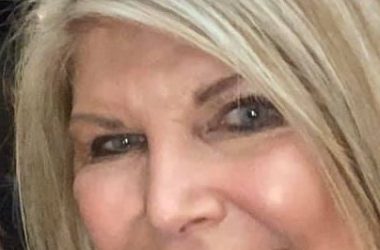If you read my column on even a semi-regular basis you know that frequently research for one column leads me to something different, yet related, to write about in upcoming issues. Last week, the statement that Nessly Chapel was the “first Methodist Protestant Church in the world” struck me as unusual. Then the more that I thought about it “Methodist Protestant” must be the magic words at play here. I did some more research, and part of it led me to religious happenings on the American frontier in the late 18th and early 19th centuries, but also led me to examine religious freedoms that in that era when we were part of the Colony and later State of Virginia.
In 1776, and prior thereto Virginia and probably Massachusetts had been the most populous, and let’s say leading colonies. This held true as they became states. In the first forty years under the Constitution we had six Presidents, four from Virginia and two from Massachusetts. During the Colonial Period the first two Colleges founded were Harvard in Massachusetts (1636) and William and Mary in Virginia (1693). Prior to 1776, Virginia took an unkindly attitude to the preaching of ministers who were not of the Church of England. In Virginia the Anglican Church was truly the “establishment”. In fact I have had the good fortune to attend a Sunday service in the Bruton Parish Episcopalian Church in Williamsburg, then the Capital of Virginia. It was built in 1715 and is still in use today. It is a beautiful structure and well attended. It has preserved its common “Box Seating” from the Colonial Period. Nameplates on the boxes commemorate some of its prominent early worshippers: George Washington, James Madison, John Tyler, Benjamin Harrison, Thomas Jefferson and Patrick Henry.
There was not true religious freedom prior to 1776, when as the Colony of Virginia voted to become independent from Great Britain, it adopted the Virginia Declaration of Rights. Adopted in June of 1776, it could only become effective if and when there was a successful revolution. However Article 16 of this document provides: “That religion, or the duty which we owe to our Creator, and the manner of discharging it, can be directed only by reason and conviction, not by force or violence; and therefore all men are equally entitled to the free exercise of religion, according to the dictates of conscience; and that it is the mutual duty of all to practise Christian forbearance, love, and charity toward each other.”
Although the distinguished Virginian George Mason is credited with drafting the document, it is believed that Henry Patrick (liberty or death) greatly influenced that Article. It is known that Henry was exposed to the evangelism of George Whitefield, a great Anglican preacher, whom his mother’s people supported. Visiting the colonies in the 1740’s and 1750’s. Whitefield is believed to have crossed the Atlantic 13 times to preach, dying in Massachusetts in 1770. Although Whitefield likely considered himself an Anglican, some historians consider him an early Methodist, (or maybe Presbyterian) so much so that John Wesley preached Whitefield’s funeral service, and he was buried in the crypt of a Presbyterian Church in Newburyport Massachusetts.
Digging deeper, I relearned some things that I learned long ago in my comparative religion classes, and if there are Methodist theologians, ministers or just devout followers here, I apologize in advance for what I am about to state incorrectly. John Wesley considered by many to be the founder of Methodism started out as an Anglican Clergyman in England but was a reformer within that institution and developed an immense following among the lower classes of English society, (there really was not much of a middle class in England at that time.) I must state it is not my purpose to recite either the life of John Wesley or a history of Methodism here. I couldn’t do that in fewer than 10,000 words, and I still would get some of it wrong. At the time of his death Wesley considered his teachings to be within the Anglican tradition. After early hostility to his efforts, he became widely respected and at the time of his death in 1791, he was considered by many to be the most loved man in England. More recently an English survey placed him at number fifty in a list of the greatest Englishmen of all time.
Even though the paternal lineage in my family is strongly some form of Methodist, the maternal side comes out of the Campbellite tradition. Just like the Disciples of Christ, Christian Church, the original Methodists and Wesleyans once established, split into several recognized orders. Their growth in America was made partially possible in Virginia by the exodus of Anglican clergy following 1783, as well as the Religious Freedom provided by the Virginia Declaration of Rights, and later the Bill of Rights. Also it was the tenacity, spirit and will of the circuit preachers who roamed much of the new country to spread the gospel, and who were known as circuit riders or preachers. In this endeavor they travelled the frontier and small settlements. These preachers were frequently, but not always Methodists. But according to some sources that I consulted, the group that became the Methodist Protestant Church split off from the Methodist Episcopal Church in 1828. Accordingly, it is quite possible that the Nessly Chapel became their first fixed Congregation and Church Building.
